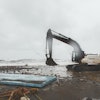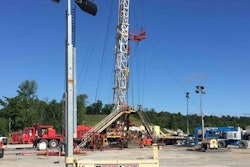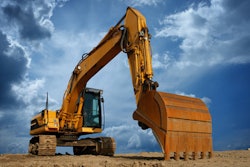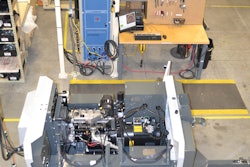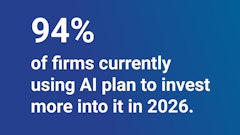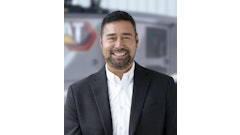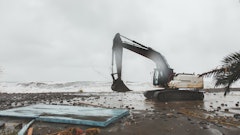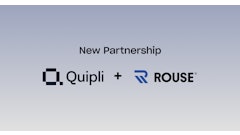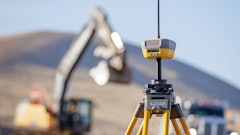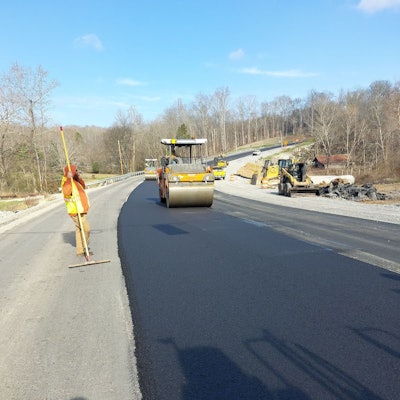
Construction jobsites are notoriously busy and dangerous areas. According to the Federal Highway Administration, each year over 20,000 workers are injured in road construction work zones. Over 35% of those injuries are due to contact with objects or equipment.
And that statistic unfortunately makes sense as these massive machines move around in close proximity to vulnerable workers on the ground. It takes communication and concentration from both to keep everyone safe. Luckily, technology is also available to help.
"If you take a drive by any jobsite, you're going to see that harmony between machine and people out on the jobsite. So what we really pay attention to is how does that interaction work," Nate Jensen, senior sales manager for aftermarket at Sensata says. "The legacy we think of, is being out there and hearing an alarm, the backup alarm. That's where we started in the market was creating backup alarms which is the first line of defense to alert the people that are around the machine so they can make a change to their behavior."
In loud environments however, like construction sites, backup alarms become less effective and so accidents unfortunately still happen.
"Why is that? It's because we're not really putting control where control needs to be. And that's where our technology comes in," Jensen says.
Control In Drivers Hands
The PreView Radar Blind Spot Monitoring from Sensata accurately alerts drivers of obstacles they may not be aware of around their vehicles resulting in fewer rear-end and side blind zone collisions and improved safety.
“Operators are ultimately in control of their equipment,” Jensen says. “We saw a need in the market to create an exterior based alarm system that puts drivers in control to avert disaster.”
The intuitive solution uses a frequency modulated wave that blasts energy out and alerts drivers if there are obstacles within danger zones around their equipment so they can react accordingly.
"A driver is either going to be operating a machine with awareness of what's going on around him or he's going to be operating a machine without awareness," Jensen says. "So in both scenarios, they might operate the machine in the same way, but they don't have any truth as to what's actually happening next to the machine, so they could have created an incident or they could have rolled over another vehicle that was on site.
"If you think about large haul equipment, it's very simple for them to roll over top of an S10 sized pickup and not even really know it because it just seems like another rock to them," Jensen continues. "So what we're trying to do is mitigate that risk. Blind spot monitoring creates efficiency from the operator standpoint because now they have visibility in areas where they didn't have it before. More importantly, it gives them that circle of safety around their vehicle that they can use as a way to help ensure that they're not going to run into the issues down the down the road as they're traveling, as they're backing up as they have machines that are coming around them."
The PreView Plus system integrates a camera and monitor with its PreView Radar system. PreView Plus supports as many as four cameras and 24 sensors per vehicle to provide up to 360º object detection. The in-cab mounted monitor provides drivers with visual information, color coded indicators and audible alerts.
"Our radar solution is mounted on the machine-type based on where the operators are seeing some of these incidents," Jensen says. "We have five zones of detection available and in those five zones of detection, we can go out to a range of about 98 feet, from the vehicle itself, and then we go about 12 meters wide on each side. So pretty significant pattern and we can cover a pretty significant detection zone."
Education & Awareness
As with any new technology, it takes commitment from the entire organization to ensure the systems are being used properly and to their maximum capabilities. That starts with driver training and buy-in.
"If you simply install the camera and hope that this is going to solve the problem, hope is not a good strategy," Jensen says. "It really does take some operator education and an adjustment to habit for this to work effectively. Where somebody may be backing a vehicle, and they're used to just kicking that thing in reverse and knocking it back, what they're doing now is they're getting some level of awareness. Our system is providing some guidance to them that there might be threats back there so now they can slow their roll in terms of how they're moving the machines. So it's really a balance between the solution itself and the education and awareness of the operators."
Technology companies like Sensata are happy to provide on-site or virtual training to ensure all users are comfortable with the solutions and with how it will make their jobs easier, and safer.
With the radar and camera-plus-radar systems in place and fully operational, Preco can prevent costly damage to people, property and fleet equipment; reduce maintenance and repair costs; and teach drivers to become more alert and proactive—without incurring extra training costs.
For vehicles traveling on high traffic urban roadways, the Preco also offers the PreView Side Defender II which provides protection for side blind spots. Side Defender II adds Vulnerable Road User (VRU) awareness to reduce the incidence of collisions with bicycles and motorcycles. PRECO’s PreView Sentry has been developed with a detection zone that compliments the confinements that often face vehicles in the construction industry.




